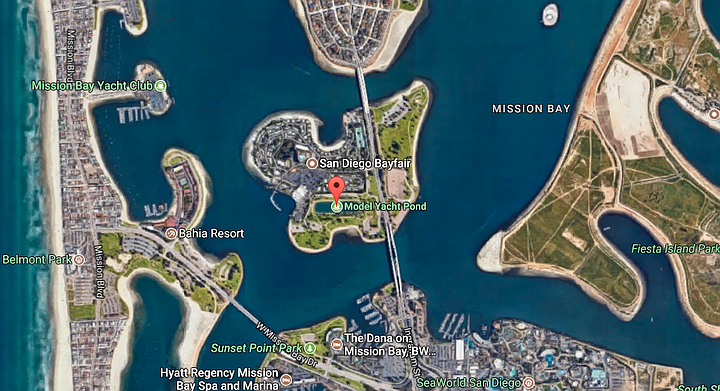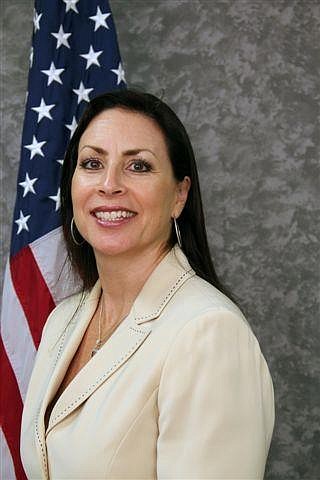 Facebook
Facebook
 X
X
 Instagram
Instagram
 TikTok
TikTok
 Youtube
Youtube

A new twist in the March drowning death of a two-year-old in Mission Bay: the 911 system record of the calls were requested by San Diego attorney Cory Briggs, according to the city’s NextRequest document system.

The system publishes all the requests it responds to once the city’s part of the work is complete. Normally, the name of the requesters is withheld, but the response to Briggs included a personal note from city employee Lea Bernal-Fields, asking Briggs to check his office’s IT system for its ability to get emails.
Reached via email, Briggs confirmed he requested the documents. He indicated that he is representing lifeguard Sgt. Ed Harris and alleged that the city is retaliating against Harris. After the two-year-old’s death, Harris — who is also the head of the lifeguard union, Teamsters Local 911 — went public with allegations that the fire department’s decision to route calls for water rescues to the main dispatch instead of going directly to lifeguards had contributed to the boy’s near drowning, which resulted in his death a few days later. The fire department angrily denied the allegations.
“To politicize a family’s personal tragedy by all there was a delayed response having to do with a 911 call transfer was disgraceful,” fire chief Brian Fennessy said at a March press conference. “There was no delayed response.”

Fire department spokeswoman Mónica Muñoz wrote in an email that sending fire-department paramedics was the right decision because callers told the dispatcher the child was out of the water. “This was a call for paramedics. Not a water rescue,” she wrote. Muñoz said lifeguards were notified at the same time the fire department was notified.
The documents the city provided to Briggs include a rough printout and a polished summary of the computer-aided dispatch calls and responses to emergency calls from the Model Yacht Pond just south of Paradise Point resort.
On March 12, just after 6 p.m., 911 dispatch received a series of calls about a “juvenile male” drowning in what was described as a lake. The first call came in at 6:19 p.m., and it appears that San Diego Fire and Rescue medics were dispatched and on their way at 6:20 p.m. When the call for help reached the lifeguards is in dispute. An out-of-order entry says they were notified at 6:19 p.m. and the fire department's spokeswoman says the notification simultaneously went to lifeguards and paramedics. They first show up in the column for responding agencies after a police department referral two minutes later, at 6:21 p.m. The lifeguards appear to have recognized the description as the north side of Model Yacht Pond.
Lifeguards arrived on scene at 6:24 and paramedics arrived at 6:27, according to the dispatch printout. In the meantime, a medic was on the phone with the man who reported the drowning, coaching civilians at the scene to do CPR on the boy. A note from the dispatcher describes the scene as sounding “extremely chaotic.” The transcripts indicate that the boy had a pulse when he was transported to UCSD hospital. He died three days later.
Asked to help accurately read the transcripts, Muñoz was unable to find time on Tuesday and Wednesday. She cautioned that people — including this reporter — often misread these reports or don’t understand them. Provided with a simplified timeline prepared by this reporter, Muñoz said it was inaccurate (for that reason, I didn’t include that timeline and instead am providing the documents).
None of the dispatch center recordings were released to Briggs or anyone else, Muñoz said. The fire department does not comment on lawsuits, she added.


A new twist in the March drowning death of a two-year-old in Mission Bay: the 911 system record of the calls were requested by San Diego attorney Cory Briggs, according to the city’s NextRequest document system.

The system publishes all the requests it responds to once the city’s part of the work is complete. Normally, the name of the requesters is withheld, but the response to Briggs included a personal note from city employee Lea Bernal-Fields, asking Briggs to check his office’s IT system for its ability to get emails.
Reached via email, Briggs confirmed he requested the documents. He indicated that he is representing lifeguard Sgt. Ed Harris and alleged that the city is retaliating against Harris. After the two-year-old’s death, Harris — who is also the head of the lifeguard union, Teamsters Local 911 — went public with allegations that the fire department’s decision to route calls for water rescues to the main dispatch instead of going directly to lifeguards had contributed to the boy’s near drowning, which resulted in his death a few days later. The fire department angrily denied the allegations.
“To politicize a family’s personal tragedy by all there was a delayed response having to do with a 911 call transfer was disgraceful,” fire chief Brian Fennessy said at a March press conference. “There was no delayed response.”

Fire department spokeswoman Mónica Muñoz wrote in an email that sending fire-department paramedics was the right decision because callers told the dispatcher the child was out of the water. “This was a call for paramedics. Not a water rescue,” she wrote. Muñoz said lifeguards were notified at the same time the fire department was notified.
The documents the city provided to Briggs include a rough printout and a polished summary of the computer-aided dispatch calls and responses to emergency calls from the Model Yacht Pond just south of Paradise Point resort.
On March 12, just after 6 p.m., 911 dispatch received a series of calls about a “juvenile male” drowning in what was described as a lake. The first call came in at 6:19 p.m., and it appears that San Diego Fire and Rescue medics were dispatched and on their way at 6:20 p.m. When the call for help reached the lifeguards is in dispute. An out-of-order entry says they were notified at 6:19 p.m. and the fire department's spokeswoman says the notification simultaneously went to lifeguards and paramedics. They first show up in the column for responding agencies after a police department referral two minutes later, at 6:21 p.m. The lifeguards appear to have recognized the description as the north side of Model Yacht Pond.
Lifeguards arrived on scene at 6:24 and paramedics arrived at 6:27, according to the dispatch printout. In the meantime, a medic was on the phone with the man who reported the drowning, coaching civilians at the scene to do CPR on the boy. A note from the dispatcher describes the scene as sounding “extremely chaotic.” The transcripts indicate that the boy had a pulse when he was transported to UCSD hospital. He died three days later.
Asked to help accurately read the transcripts, Muñoz was unable to find time on Tuesday and Wednesday. She cautioned that people — including this reporter — often misread these reports or don’t understand them. Provided with a simplified timeline prepared by this reporter, Muñoz said it was inaccurate (for that reason, I didn’t include that timeline and instead am providing the documents).
None of the dispatch center recordings were released to Briggs or anyone else, Muñoz said. The fire department does not comment on lawsuits, she added.
Comments